I mentioned in my post about the Treasury that it was the first in a series of three; this is the second.
After we left the Treasury, we hopped aboard a taxi-van1 and headed out of the city towards Klosterneuberg. The name is an interesting one – you’ve got “neu,” which means “new,” linking together “berg,” a term that in this case refers to a castle being built by the nobility, and “kloster,” which is etymologically linked2 with the word ‘cloister.’ So if you’re going for a verbose translation of the name, you’d get something along the lines of “the new town combining the Church and the State.”3

On the way out there, we stopped at a viewpoint to look over the city. Beautiful view, though we only stopped for a bit as it was fifty degrees out with a nice twenty-mile-an-hour breeze.4

Skipping right on past the outside of the building, we’ll go to the indoors.
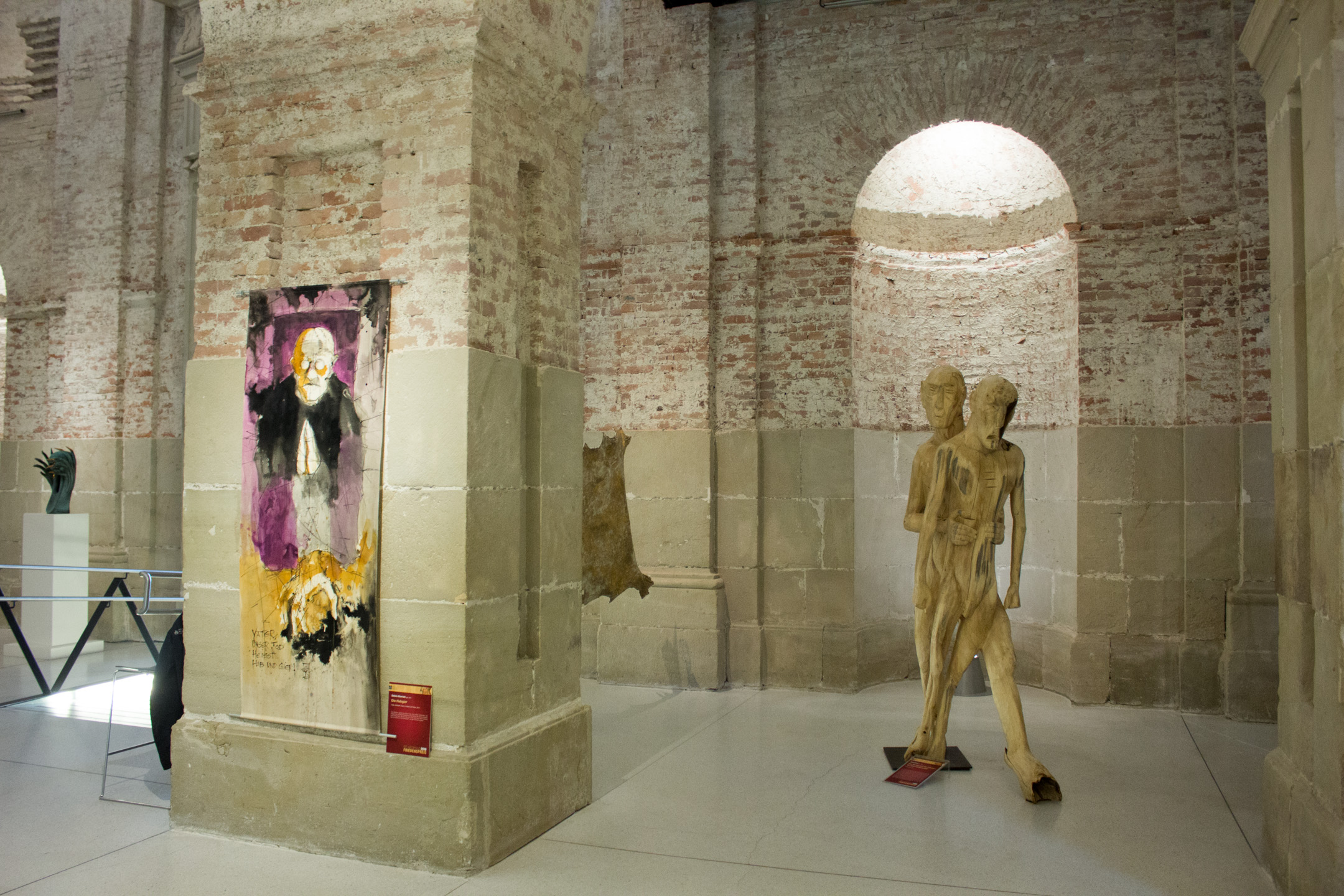
The lobby has some nice statuary above, which I suspect dates back to when the place was built. Past the lobby, though, there’s a nice installation of more modern art.
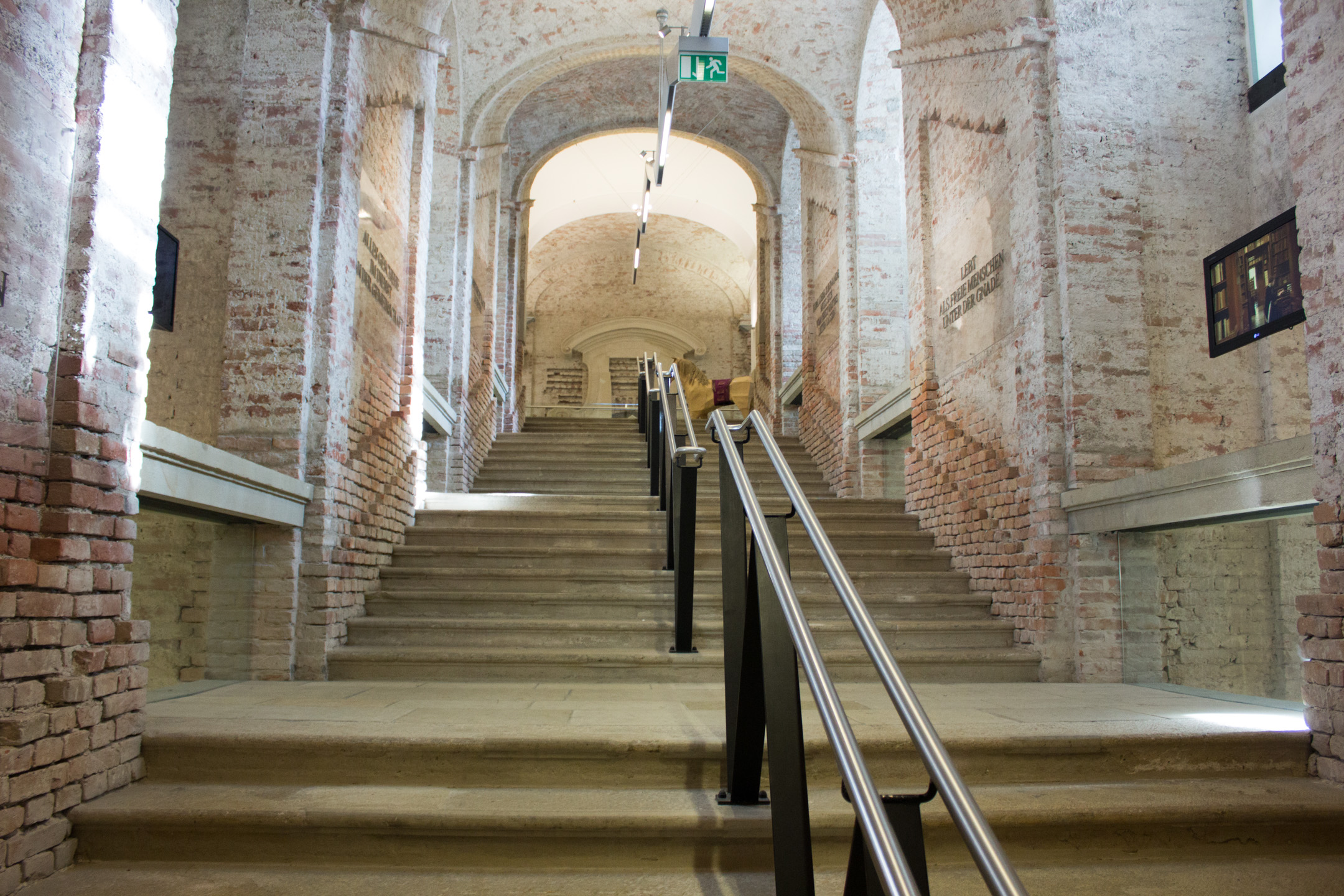
The cool thing about this portion of the building5 is how well they’ve blended the modern additions with the original stonework. This staircase is stonework wrapped in glass, and it doesn’t feel anachronistic or anything, it’s just beautiful architecture. I quite liked the effect.

A bit further in, though, and it’s all original work.6

Now, one of the most famous artifacts in the collection at Klosterneuberg is the Verdun Altar. The panels tell the stories of Creation, and the Old and New Testaments.
What I thought cool was the story of the altar itself, though: the panels were originally the decoration of the pulpit in the church on the site. Then, in roughly the 13th century,7 tragedy struck: fire. Fortunately, the inhabitants of the cloister were there to fight the fire, but before they had it under control their supply of water ran out.
Before the panels could be destroyed, though, someone got creative, and went for the wine cellars. Using the abbey’s downright impressive supply of wine,8 they were able to hold off the flames long enough to save the panels, though not the building itself. A few more panels were added, and the collection was affixed to the structure it still resides on today; the Verdun Altar was born.
But oh, story time isn’t over.
Several hundred years later, Europe got a bit riled up. The abbey was able to sit out the First World War fairly well, but the second one got a bit close to home when the Allies arrived and occupied the country: soviet soldiers were, at least temporarily, housed in the abbey.
Now, it’s a shame to say it, but soldiers aren’t universally fine, upstanding members of society. They have an unfortunate tendency to pillage enemy lands when they’re the victorious, occupying force.
Fortunately, the people of the abbey had planned on things getting a bit rough – it’s not like the Axis losing the war was a big surprise to anyone, by that point. Once things had started to get rough, they’d moved the Altar9 into the third level of the wine cellars below the structure. Come the occupation, the soviet soldiers started to explore the abbey in hopes of finding something worth pillaging, and boy did they: the first level of the wine cellars, packed to the brim with fine wines. Why bother looking further, boys, what better is there to find?
Thus, this beautiful work of art was saved not once but twice… by wine.
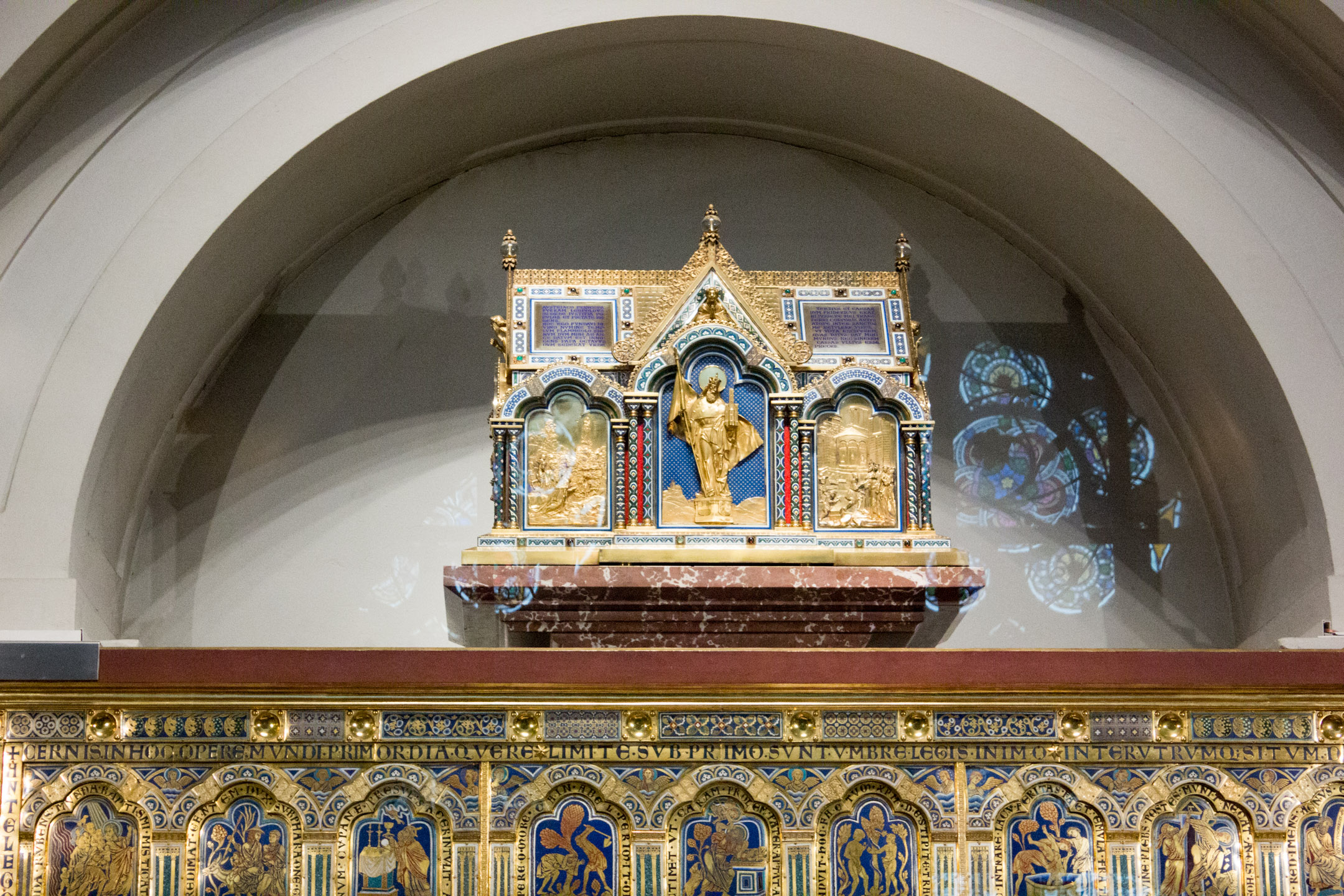
Anyhow, above the Altar is Leopold III. He founded the place, so they… put his skeleton in a fancy box over the altar.
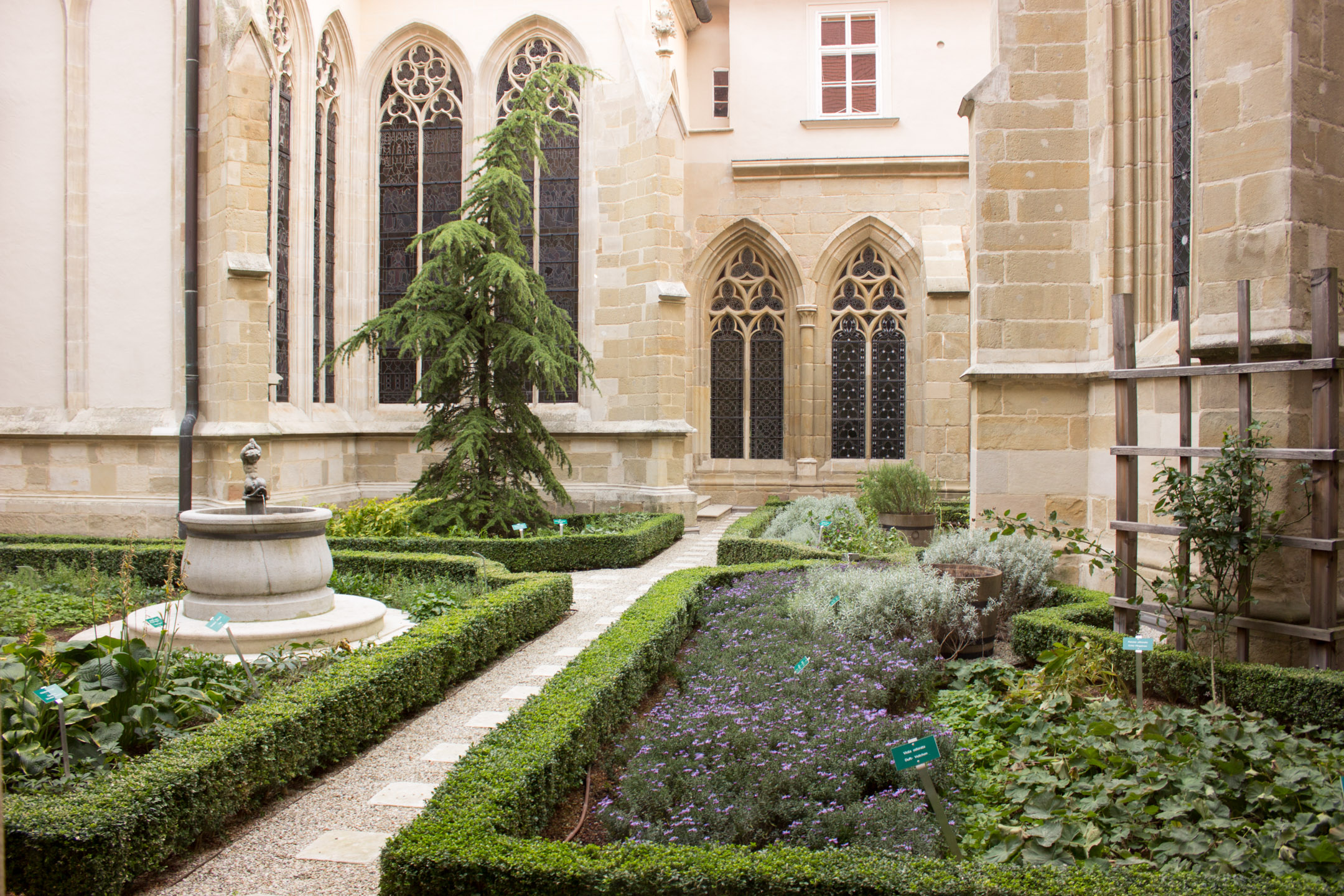
Just outside that chapel is a nice little garden – apparently getting it in there took quite a bit of work, as it was only added sometime in the past century.

Some of the hallways have windows looking into them – artifacts left from the original structure that the Babenbergs built, before it was enclosed and expanded upon by the Habsburgs.

This room used to be the wellhouse for the inhabitants of the cloister; now it’s home to this beautiful filigreed tree.

We took a quick shortcut through part of the wine cellars. They’re still in active use for the making of wine, and the whole place is rather… fragrant.

There’s also a bit of a museum within the building – it was used as a seat of power for the Babenbergs before they moved to Vienna, after all.

The Habsburgs actually also intended to use it as such, but a while after they started destruction one of them decided that they actually liked Schönbrunn a lot more, halted construction on Klosterneuberg, and moved back to the palace in Vienna. Ah, well, there’s still a formal reception room to show for it.
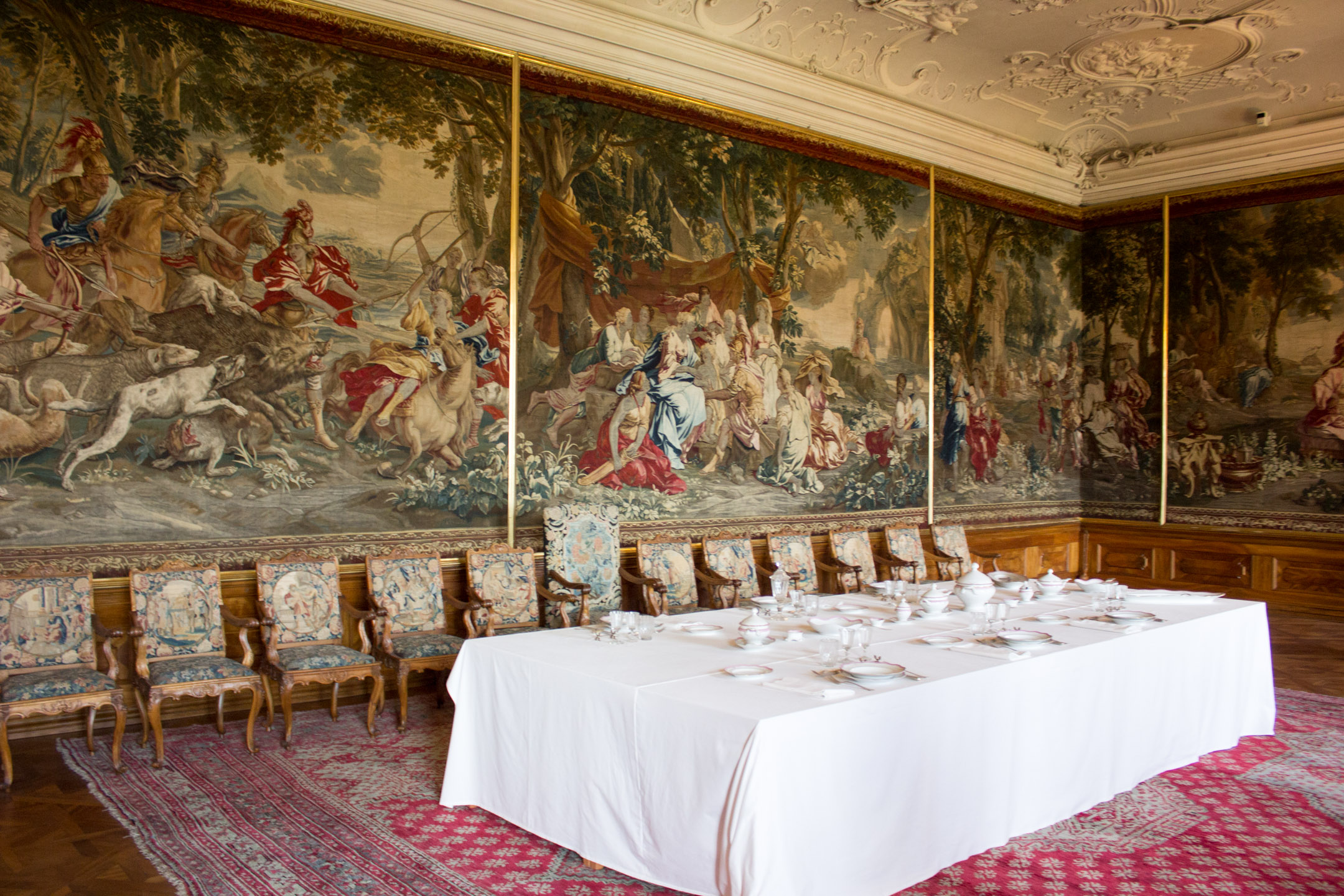
And this dining room, where Imperial guests would occasionally have the honor of watching the Emperor eat.
What, food for them to eat? In the Imperial Presence? Don’t be ridiculous. It wasn’t dinner, it was a show.10

We’re going to end on a picture of the Baroque church – it was originally Romanesque, but the Habsburgs converted it to a baroque style11 when they were doing the rest of the work on the place.
- People keep calling them busses and I am very intent on the fact that they’re vans not busses dangit ↩
- I don’t know if it’s the root of, or has a common root with ↩
- Actually that’s less of a “verbose” translation and more of an “explaining the cultural as well as the linguistic aspects” translation. Quality services, here. ↩
- I recognize that metric is a more coherent measurement system overall, but my readership is largely American. And I personally think that Fahrenheit is a more human temperature scale – sure, it’s terrible for scientific purposes, but for the temperatures the layperson cares about, it’s fairly useful. ↩
- I suppose I should mention that the building I’m mentioning here, and throughout this post, is the titular Klosterneuberg Abbey, begun under Leopold III of the House of Babenberg and expanded under the later Habsburg rulers. ↩
- Well, except the tastefully integrated electric lights and security system. ↩
- In case you haven’t noticed, I have an aversion to fact-checking myself as I write, and I’m not the best with dates. Nobody cite me as a source for stuff, is what I’m saying. ↩
- It’s one of the oldest and most prolific wineries in Austria. Priests know how to party, apparently. ↩
- And the beautiful stained glass windows of the chapel in which it stands. ↩
- But seriously, that whole experience sounds painfully awkward for everyone involved. ↩
-
Read: made it all gaudy, then covered everything in gold.
In case you can’t tell, I’m not a huge fan of Baroque style. ↩
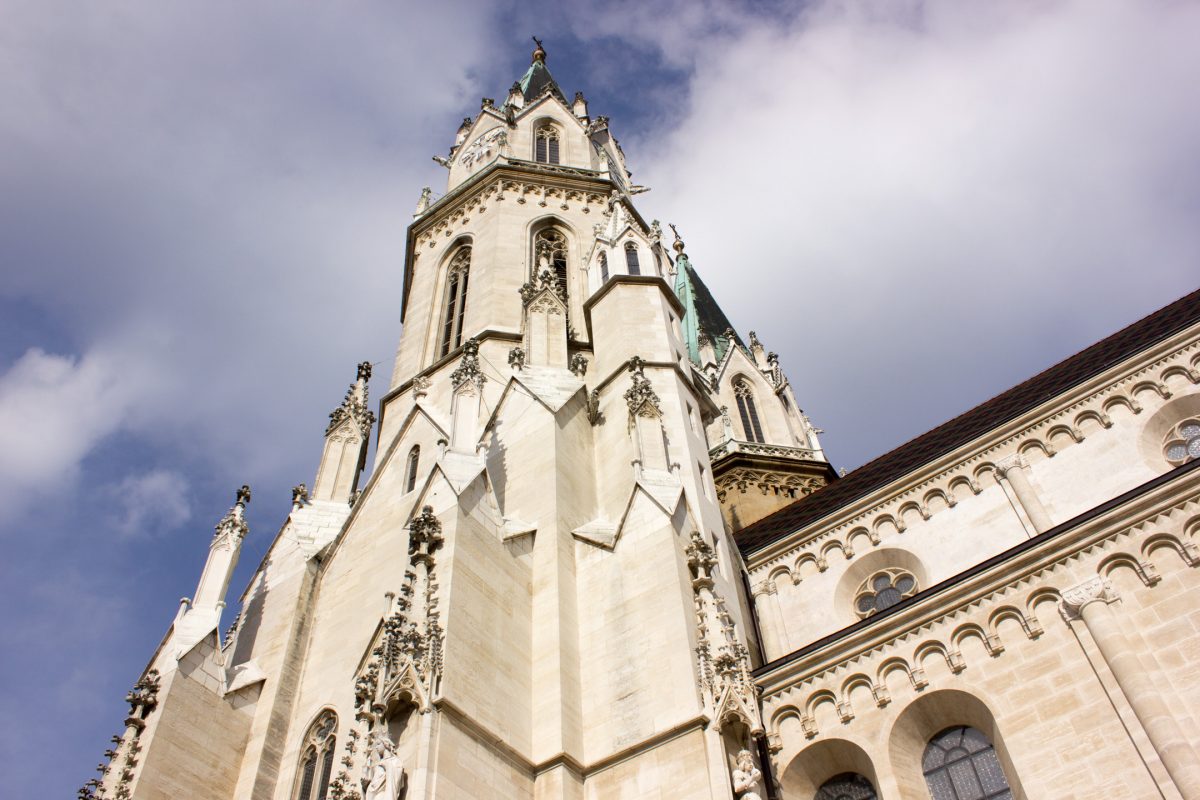
One reply on ““Klosterneuberg,” or, “once again, wine saves the day””
[…] is the last of my three posts about what all we did last Friday. Long day, believe me, but a good one. After we left […]